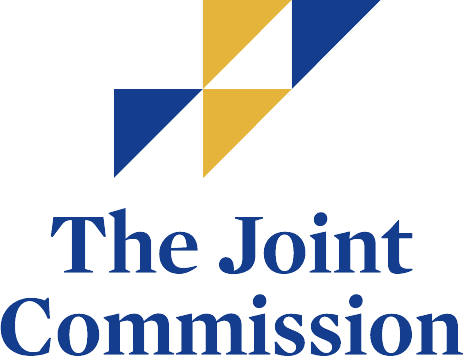Addiction recovery has been a lasting need in the United States. In addition to individuals who suffered in their work environments and schools, substance addiction has jeopardized most families due to its devastating financial and health repercussions. With that said, new methods and medications have been created to lessen the fatality of addictive substances and their control to individuals. From preventing alcoholism to reversing opioid overdose, the treatment space and healthcare industry designed prescription drugs to counter the effects of illicit and unbeneficial compounds.
To be specific, naloxone, commonly known as ‘Narcan’ for its brand name, is a medicine used by individuals and institutions, such as treatment centers in Arizona, to negate the symptoms of opioid use. It is most especially consumed when an opioid overdose has occurred to an individual. Some symptoms which Narcan addresses include breathing difficulties, blood pressure imbalance, and even nausea. As dependence also becomes prominent in opioid withdrawal, medication can also mitigate restlessness and agitation. Although Narcan can be perceived overall as a beneficial chemical compound for substance addiction, it still has precautions and risks to avoid misuse.
What Is Narcan?
Narcan, the brand name of naloxone, is a drug that addresses an opioid overdose. Although its chemical composition aims to reverse the harmful effects of the drug on physical health, some brands of naloxone can be combined with an opioid to increase the medication’s stimulation and relaxation effect and avoid drug dependency. To be specific, prescription opioids taken with naloxone slow the breathing, which directly counters respiratory depression due to illicit opioid overdose. Aside from this, Narcan can minimize the effects of other addictive and pain-relieving drugs, such as morphine and heroin.
According to recent studies, the common use of Narcan can decrease the fatalities of opioid overdose on a wide scale. However, it is still essential to know the drug’s proper usage and potential risks, and how it physically operates inside the body. For one, a health professional’s prescription is necessary for naloxone consumption, as the medication initiates its effects through the central nervous system.
What class of drugs is Narcan?
Narcan is considered an opiate antagonist among the classes of medications; this means that it belongs to a class of drugs that suppress or block the physical manifestations of opioid consumption. These drugs react well, especially when high levels of opioids are present in the blood and the brain. To be specific, opioid receptor antagonists inhibit opioid receptors, namely mu, kappa, and delta receptors, in the central or peripheral nervous system. These three opioid receptors, which Narcan blocks off, are responsible for the respiratory problems, constipation, and hallucination an individual experiences after consuming illicit opiates.
How do you administer Narcan?
There are multiple ways of administering naloxone (Narcan) to the human body. It can be delivered through oral consumption, substance injection, and nasal administration. Although all of which have the same effects based on the drug dosage, the time it takes for the body to process Narcan varies, as the drug itself aims to reach the nervous system of the person. The following are the common methods in administering naloxone.
- Oral consumption. Oral consumption is often the method of administration when the individual also requires small doses of opioids. This is also the method when trying to address opioid overdose along with drug withdrawal. Although it takes time for Narcan to be active through oral administration, it has the lowest risk of naloxone misuse.
- Injection of the substance. There are two types of injection methods, namely intravenous and intramuscular injection. Intravenous injection involves delivering the said drug directly through the vein, while intramuscular administration involves injecting it into the muscles. Effects begin within two minutes after delivering to the vein and five minutes after injecting to a muscle.
- Nasal administration. Nasal administration is also an available option, especially when there are hindrances to oral consumption and injecting. It is also used when breathing difficulty must be addressed directly.
Although there are various Narcan administration methods, their effects are identical. Effects last from 30 seconds to 24 hours, depending on the drug amount and number of doses.
How Does Narcan Work? How Does It Work Against Overdoses?
As mentioned, Narcan works by inhibiting the three opioid receptors of the body, namely mu, delta, and kappa. It counters the depression in the central nervous system, which opiates can cause. When naloxone is not given to an individual experiencing overdose, they can experience involuntary respiratory impulses, feel pain caused by nervous system signals, and even lose the capacity to process emotions properly.
To make things simple, Narcan serves as roadblocks to opioid chemical compounds trying to make contact with the parts of the brain that can make the body feel “high.”
What is the purpose of Narcan?
Primarily, Narcan aims to counter the following symptoms of opioid overdose:
- Respiratory depression
-
- Vision problems – Prolonged dilated pupils due to drug effects can harm eyesight permanently.
- Potential brain damage – Seizures occur during the dangerous moments of overdose.
- Unconsciousness
-
- Substance addiction – Although naloxone does not completely treat the individual from substance use disorder, administering the medication can provide the feeling of drug withdrawal and its effects.
- Septic shock
Failing to address the symptoms of opioid overdose can lead to death. According to a study in 2018, over 100,000 deaths due to drug overdose were recorded annually.
What are the side effects of Narcan?
The side effects of Narcan include ones that are similar to symptoms of narcotic drug withdrawal. The following are its common side effects:
- Flushing
- Tiredness
- Nervousness
- Irritability
- Diarrhea
These symptoms are not considered harmful, as they can just result from multiple drug compounds acting in the body. Although there is a chance that an individual becomes dependent on Narcan, the risk is significantly lower, because unlike pain-relieving drugs, it generally causes uncomfortable agitation. With that said, the body prefers the relaxation that illicit drugs provide. This is also why using multiple doses of Narcan is not strictly prohibited in treating drug overdose.
It is important to be aware of how Narcan or naloxone works to make the most out of its benefits. Being guided by facts also allows you to make informed decisions for yourself and your loved ones, especially in circumstances involving both drug overdose and substance addiction.
At Buena Vista Recovery, we provide programs and therapies designed for various types of drug addiction. We have highly-regarded rehab centers in Tucson, Az. Our programs do not focus solely on treatment but also on prevention and reintegration into the community. We believe that everyone deserves another chance at a productive life.
If you or someone you know is seeking rehab, get in touch with one of our addiction professionals today. Give us a call at (800) 922-0095 or visit our rehab center at 5151 E Pima St, Tucson, AZ 85712.






